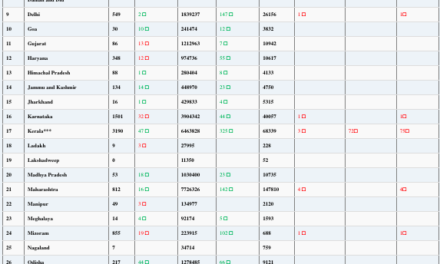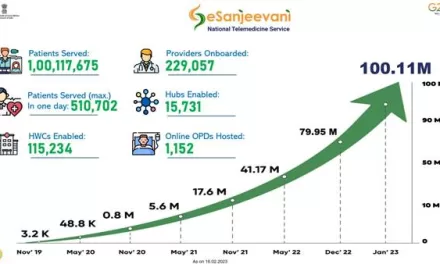
The observed increases reported to WHO/Europe and the European Centre for Disease Prevention and Control (ECDC) have followed a period of reduced incidence of infections with Group A Streptococcus (GAS) during the COVID-19 pandemic.
It is likely that the increase in cases of iGAS disease in children is also associated with the recent increased circulation of respiratory viruses, including seasonal influenza and respiratory syncytial virus, as coinfection of viruses with GAS may increase the risk of iGAS disease.
Disease symptoms
GAS bacteria are the most common cause of bacterial pharyngitis in school-aged children. Gas infections usually cause mild illness including sore throat, headache and fever, along with a fine, red rash (scarlet fever). The incidence of GAS pharyngitis usually peaks during winter months and early spring in Europe. Outbreaks in kindergartens and schools are frequently reported. GAS pharyngitis is diagnosed by rapid antigen detection test and/or bacterial culture, and is treated with antibiotics and supportive care.
In rare cases, GAS bacteria can also cause a severe, life-threatening infection known as iGAS disease, which may manifest as bacteraemia, pneumonia, or skin and bone infection (cellulitis, osteomyelitis, necrotizing fasciitis). Children with viral infections such as varicella (chickenpox) or influenza are at higher risk of developing iGAS disease.
Risk assessment
GAS and iGAS infections are notifiable diseases in only a limited number of European countries. It is therefore difficult to assess the overall level of circulation in the WHO European Region at this point.
Although investigations are ongoing, early typing data suggests that the surge of cases is not related to a specific or new strain, nor an increase in antibiotic resistance of GAS.
Given that the current increase in cases of iGAS disease is, overall, relatively low, that the reported cases are not caused by a new strain, and that the disease is easily treatable with antibiotics, WHO/Europe and ECDC currently assess the risk for the general population posed by iGAS infection as low. This will be reviewed as investigations continue.
Response
All European countries should be vigilant for a similar rise in cases among children, especially considering the increase in respiratory virus circulation that is now occurring across Europe.
Reducing the transmission of GAS will help to reduce the risk of severe iGAS infection. Early recognition of iGAS disease and prompt initiation of specific and supportive therapy for patients can be life-saving. Public health authorities should therefore consider activities to raise awareness among clinicians and the general public, and encourage prompt testing and treatment of GAS infections according to national guidelines.
GAS infections should be included in the differential diagnosis of children who present with severe respiratory syndromes and those with preceding viral infection (including chickenpox), as well as those who have been in close contact with scarlet fever patients. Close contacts of iGAS cases should be identified, assessed and managed according to national guidelines.
WHO Regional Director for Europe Dr Hans Henri P. Kluge calls on countries to “increase vigilance to iGAS cases, especially when respiratory viruses are widely circulating in children”. ECDC Director Dr Andrea Ammon notes that “iGAS cases can be managed easily if detected in a timely manner”.
WHO/Europe and ECDC encourage countries to undertake public health messaging to parents and guardians of young children. iGAS infections can present initially with non-specific symptoms (fever, general tiredness, loss of appetite) but, particularly in children, they can rapidly progress to severe disease. Parents and guardians should therefore be aware of worrisome symptoms and seek clinical advice and assessment if their child’s health is not improving.
Public health authorities are encouraged to coordinate with laboratories to obtain specimens for and/or data regarding molecular testing and antibiotic susceptibility testing.
As prevention of viral illnesses is likely to be important in reducing the risk of iGAS disease, vaccination against seasonal influenza and COVID-19 should also be promoted.
Adequate hand and respiratory hygiene, as well as good indoor ventilation, should continue to be emphasized as important protective measures during this winter season. Schools and other educational facilities where GAS infections are reported should follow cleaning and disinfection guidance for toys and frequently touched surfaces.
ECDC and WHO/Europe will continue to work together with countries to gain a better understanding of the epidemiological situation in the Region, and to provide practical recommendations to the public and guidance for country responses.











